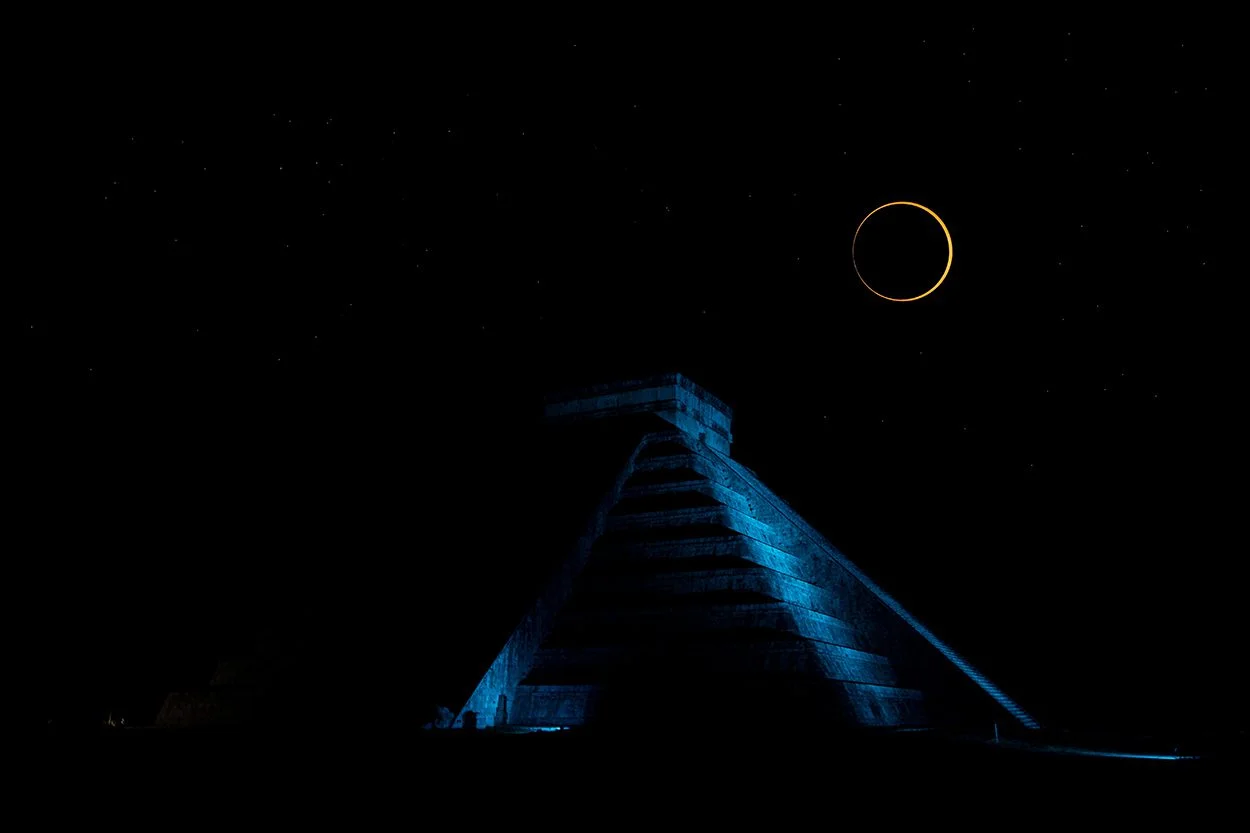On October 14th, 2023, a celestial event will unfold as the Sun, Moon, and Earth, align to create an annular solar eclipse.
An annular solar eclipse occurs when the Moon moves between the Sun and Earth, but is positioned near its farthest point from our planet. Given the greater distance, the Moon appears comparatively smaller than the Sun, only partially obscuring it.
Consequently, observers witness the Moon as a dark disk juxtaposed against the larger, radiant disk of the Sun, forming the striking visual illusion of a ring encircling the Moon.
In the Nahua language it was described as Tonatiuh qualo , “the Sun is eaten,” and in Mayan, Pa’al K’in , “broken sun”. The Maya developed an exceptionally precise form of pre-telescope astronomy, leveraging their fully developed writing system and their indigenous positional numeral system. These achievements were wholly native to Mesoamerica, setting them apart in the field of astronomical understanding.
Maya astronomy relied on naked-eye observations of the azimuths of celestial bodies as they rose and set. Their urban design and alignments frequently followed astronomical patterns and occurrences, such as El Caracol at Chichen Itza, which is an observatory aligned to follow the path of Venus through the year.
The Maya were also aware of equinoxes and solstices, with the ability to predict them reserved for the elite priests and rulers. This was achieved by using a complex system of counting the lunar months associated with the dates written in the so-called long account, and in combination with glyphs to make their astronomical calculations.
Ancient records of solar eclipses in Mesoamerica are found throughout the archaeological landscape. The logogram of Stela 3 at the Santa Elena Poco-Uinic Maya site in Chiapas records a solar eclipse on July 16, AD 790. In Xochicalco, the Pyramid of the Feathered Serpents displays a representation of a total solar eclipse that occurred on May 1, AD 664, with the sky darkening and other celestial bodies, such as Mars, Mercury, and Venus, coming into conjunction.
The Dresden Codex, a Maya manuscript from the 11th or 12th century, even contains tables and almanacs related to the visible planets and a table with 69 intervals of 177 or 148 days, related to solar and lunar eclipses.
Maya symbols for a solar eclipse is represented on page 54 of the Dresden Codex. The symbols depicted are a celestial band, the Sun, two femurs (as a sign of death), and black and white fields that resemble butterfly wings.
These celestial occurrences were pivotal moments to the Maya people, often interpreted as states of death and immobility for the Sun god, Kinich Ahau. Kinich Ahau would shine in the sky all day before being believed to transform himself into a jaguar at night to pass through Xibalba, the Mayan underworld.
During solar eclipses they necessitated rituals to restore the Sun’s regular course, illustrating the profound connection between celestial events and the spiritual and cultural practices of the Maya.
Header Image Credit : Shutterstock





